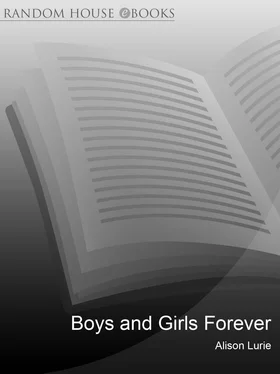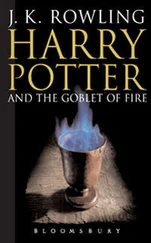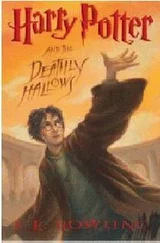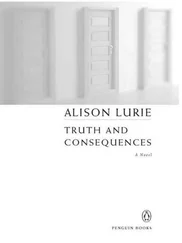Once he is free again Pinocchio returns home, where he meets what many readers have recognized as his conscience, or external superego, in the form of a Talking Cricket. The Cricket scolds Pinocchio for running away, and warns him about the dangers of idleness: if he quits school, he will grow up to be a perfect jackass. But Pinocchio refuses to listen. The only trade in the world that will suit him, he says, is that of ‘eating, drinking, sleeping, having fun, and living the life of a vagabond from morning to night.’ 1When the Cricket remarks that ‘everyone who follows that trade is bound to end up in the poorhouse or in prison,’ 2Pinocchio becomes angry and throws a wooden mallet at the Cricket, killing it. It will appear in the story again, however, first as a mysterious black-clad doctor and finally as a ghost.
Pinocchio’s external conscience also appears in the Disney cartoon, but there he has been turned into a comic figure, and rechristened ‘Jiminy Cricket’ (the phrase is, very aptly, an old-fashioned American euphemism for Jesus Christ). Jiminy Cricket wears the top hat and tails of a vaudeville performer, he sings and dances, and most of the time his admonitions are amusing but ineffective. Pinocchio only half listens to him, but does him no harm.
Disney’s Pinocchio is shown as about five or six years old, and throughout the story he remains innocent and simple, like the ideal child of romantic literature. He is without rudeness or malice: what gets him into trouble is curiosity and boredom. Collodi’s hero is clearly several years older, and full of aggressive and rebellious impulses, which are only tamed at the end of the story. Here he recalls a classic character in American children’s fiction of the late nineteenth century, the Good Bad Boy. This figure made his first important appearance in Thomas Bailey Aldrich’s Story of a Bad Boy (1869). Aldrich’s hero, who was based on his own childhood self, is bad only in contrast to his priggish schoolmates who lack a sense of enterprise and fun. He and his friends skip school and have adventures, but they do not go very far. The book became very popular, and many imitations followed, the most famous of which was Mark Twain’s Tom Sawyer .
Whether or not Collodi read Tom Sawyer (first published in 1876), there are similarities between the stories. In both books the hero has exciting adventures, learns from his mistakes, and makes his peace with society at the end of the book. Like Pinocchio (and unlike Aldrich’s original Bad Boy), Tom is seriously delinquent. He lies, steals, smokes, skips school, causes an uproar in church, runs away from his adult guardian, and associates with dubious companions. He loves freedom and pleasure and craves adventure. He is impulsive, thoughtless, and mischievous. At the same time Tom, like Pinocchio, is basically good at heart. He learns from his mistakes, and at the end of the book he is forgiven and reconciled with his family and society.
Pinocchio, with his energy and impudence, his scorn for established institutions, and his underlying goodness, is in many ways an Italian cousin of Tom Sawyer. Like Tom, he is a Bad Boy who eventually becomes a good citizen. But Pinocchio’s world is far bleaker than Tom’s. Tom’s Aunt Polly is by no means rich, but she owns a house with a garden. Pinocchio’s foster father, Gepetto, is seriously poor. He lives in a small dark room under the front steps of a building, and must worry constantly about where his next meal is coming from.
Collodi’s world is far more dangerous than Mark Twain’s Hannibal, Missouri: full of angry, deceptive people who want to exploit and rob and even kill you. When Tom Sawyer and Huck Finn run away from home they meet both good and bad characters; Pinocchio, though he is helped by a bird and a fish, meets only hostile humans. And for him even the animal kingdom is dangerous. His most important opponents are animals, two of whom also have parallels in Twain’s work. These are the Fox and the Cat, shabby but pretentious con-men very reminiscent of the King and the Duke in Huckleberry Finn (1884). (Since Pinocchio was not translated into English until 1892, it seems likely that this is just an instance of types familiar since Aesop’s Fables reappearing in fiction.) In both books the conmen come to a bad end, but whereas Huck feels pity for them, Pinocchio merely passes by in silence. In this, the story is closer to the pattern of the classic European folk tale, in which the villains seldom reform and do not need to be forgiven.
At one point in Tom Sawyer Tom runs away from home to Jackson’s Island in the Mississippi, where he and his friends can enjoy themselves without interference from adults. They are away only a few days, however, and when they become homesick and return to Hannibal, they are greeted as heroes. The lesson seems to be that you can skip school, worry and frighten your relatives, and get away with it.
Pinocchio also travels with other boys to a kind of children’s paradise called Funland, where there is no school and ‘the days go by in play and good times from morning till night.’ 3But his holiday lasts far longer than Tom’s. He lives in Funland for five months without tiring of it or missing Gepetto. Then, as the Talking Cricket has predicted, he and his best friend Lampwick turn into jackasses. They, like all their comrades, are then sold at fairs and markets by the wicked wagon-driver who has lured them to Funland in order to make a profit on their inevitable transformation. Pinocchio goes to a circus, where he is forced to perform tricks, beaten, and starved; when he becomes lame, he is sold to a dealer who tries to drown him.
These events are both a metaphor and a warning, one that Collodi reinforces by remarking that ‘by virtue of playing all the time and never studying, those poor gullible boys turned into so many donkeys.’ 4The moral (as true today as it was in Collodi’s time) is that poor boys who quit school and hang about doing nothing and enjoying themselves are apt to end up as exploited and overworked laborers—or possibly dead.
Pinocchio’s metamorphoses are frightening, but thematically interesting. During the book he moves from the vegetable to the animal kingdom, rising gradually within each class. His name, which in Tuscany at the time meant ‘pine nut’ or ‘pine seed’—the contemporary term is pignola —associates him with a plant. He begins life as a featureless stick of firewood (possibly pine wood) which is then transformed into a wooden puppet. Next he moves through animal identities (watchdog and donkey), and finally achieves full human status. Metaphorically, it is the same progression that we see in children, who start out as more or less inert matter, then become ignorant if lovable bundles of need and greed, with short attention spans and a wish to explore the world without regard for its dangers. Later, like animals, they resist confinement, live in the present, and continually seek food and amusement.
Apart from this possible parallel, why did Collodi chose a puppet for his hero instead of just a naughty boy? 5Possibly because in the theatre what scholars call ‘performing objects’—puppets, marionettes, automatons, shadow figures, animated props—have advantages denied to human actors. Actors are never the same as the parts they play, and however skilled they may be we are always aware of the real person beneath the disguise. Puppets, on the other hand, can appear as pure representations of some individual type or character. (For this reason, the British stage designer Gordon Craig once expressed the hope that in the future all actors would be replaced by puppets.)
Pinocchio has sometimes been seen, especially by readers who think first of the Disney version, as a classic fairy tale. If so, it is a tale of a special type. In most fairy stories with a male protagonist, the young hero leaves his original family, has adventures, and ends up marrying a princess and starting a new family. Folklorists refer to such tales as Stories of Adolesence. Pinocchio , by contrast, is what has been called a Story of Childhood, like Jack and the Beanstalk or Hansel and Gretel . Here the hero does not start a new family; instead he ends up back home with a beloved and loving parent. The same pattern occurs in the second-most-famous Italian children’s classic, Dino Buzzati’s The Bears’ Famous Invasion of Sicily , where the central relationship is also between a father and a son, and one important motive behind King Leander’s invasion is to find his lost son Tony. (Interestingly, when Tony is discovered, he is working for humans as an entertainer—a kind of puppet.)
Читать дальше











